.png)
We've long known that the harsh chemicals found in many cleaning products can be dangerous if not handled correctly. However, recent research shows that common household cleaners may be much more dangerous than most people realize.
Studies show that breathing in the fumes from cleaning chemicals can cause both short-term and long-term breathing problems. Even if you don't notice immediate symptoms, years and years of exposure to these fumes can cause permanent lung damage and even life-threatening diseases like COPD.
This means that anyone who uses cleaning chemicals regularly may be putting their lungs at risk. However, the risk is much higher for people who suffer from existing respiratory problems like asthma or COPD.
People with respiratory diseases are particularly sensitive to the damaging effects of respiratory irritants like chemical fumes. That's why it is particularly important to learn how to recognize and avoid hazardous cleaning chemicals if you have a lung condition like COPD.
In this article, we're going to explain everything you need to know about how to protect your lungs from dangerous chemical fumes. We'll tell you which products are dangerous, which products are safe, and how to adjust your cleaning methods to be more lung and COPD-friendly.
We'll also introduce you to a variety of simple, safer cleaning techniques and alternative cleaning products, including lung-healthy cleaning solutions that you can make yourself at home. You will find all kinds of practical tips and tricks in this guide that you can use to significantly reduce your exposure to toxic cleaning fumes.
{{cta('fa8abc2a-1e88-4fa3-82fd-1cb5b9ed43b2','justifycenter')}}
What Cleaning Fumes Do to Your Lungs
Any time you use a cleaning solution, it emits fumes into the air that you inevitably end up breathing. These fumes are made up of gaseous chemicals and tiny droplets that mist from the solution.
Many chemicals found in cleaning products create fumes that are irritating and toxic to your lungs. As soon as the fumes touch your lung tissue, they can cause inflammation and a variety of respiratory symptoms like coughing, sneezing, and shortness of breath.
These fumes can also inflame your eyes, nose, and upper airways, causing sharp, burning pain when you breathe. If you're exposed to a lot of fumes all at once, you might experience a sore throat, dizziness, headache, nausea, and even stomach pain.
These are the acute, immediate effects, but breathing chemical fumes can cause long-term health problems as well. Breathing in even small amounts of fumes over a long period of time can cause chronic health problems and do permanent damage to your lungs.
This often happens as a result of inflammation in the lungs, which can occur any time you breathe in a respiratory irritant, including chemical fumes. If sustained for too long, the inflammation begins to injure healthy lung tissue.
This kind of lung damage is permanent and cannot be reversed. Over many months or years, as more and more lung tissue gets affected, the damage can add up and cause noticeable lung function decline.
Certain chemicals, such as ammonia, emit fumes that are immediately caustic to your lungs. When these fumes come in contact with the delicate tissue lining the inside of your lungs, they cause immediate cell death, destroying healthy lung tissue and causing inflammation.
Usually, it takes many episodes of chemical exposure and inflammation over the span of many years to cause noticeable long-term damage. Unfortunately, studies show that simply using household cleaning products on a regular basis is enough to cause permanent damage—and even COPD—over time.
That's why you should never assume that your lungs are safe when you clean just because you don't notice any symptoms or the fumes don't burn your nose. You might not realize that cleaning fumes have damaged your lungs until much later in life when it starts to have more obvious effects on your health.
What the Research Says
Researchers have known for some time that exposure to cleaning chemicals can cause asthma and respiratory symptoms, but they had little data on the long-term effects. In the past few years, however, researchers have found strong links between cleaning chemical fumes and chronic respiratory diseases.

This is something scientists have long suspected but, until recently, didn't have the data to prove. Fortunately, two large-scale studies published in the past couple of years have shed more light on the link between cleaning fumes and long-term respiratory problems.
One study from Harvard, published in 2017, found a strong correlation between subjects' use of chemical cleaners and fatal lung diseases like COPD. In a study of more than 55,000 US nurses that spanned thirty years, they found that those who used chemical disinfectants just once per week had a 32 percent higher risk of developing COPD.
A more recent study from the University of Bergen in Norway looked at the effects of cleaning in a typical home environment. After tracking 6,000 subjects for twenty years, they found that women who regularly used chemical cleaning solutions had poorer respiratory function than those who didn't.
In fact, researchers estimated that the amount of lung function these women lost was roughly equivalent to smoking a whole pack of cigarettes every day. Those who were exposed even more often than that experienced more severe lung decline.
Despite including men in the study, they were unable to find any strong evidence of cleaning product-related lung decline in men. However, that doesn't mean that men who get regularly exposed to fumes from cleaning chemicals are any less at risk; the researchers noted that the men in the study just didn't use cleaning products as often as the women subjects, which likely left them with too small a sample to detect such effects among the men.
These studies show that even minimal exposure to chemical fumes can have a significant effect on your lungs over the span of many years. They also indicate that the severity of lung damage is directly related to how frequently you are exposed.
The most important take-away is that you should limit your use of chemical cleaning products as much as possible. And when you must use them, you should be careful to breathe in as little fumes as possible.
How Cleaning Fumes Affect People With COPD

Using household cleaning chemicals puts you at risk whether you're a healthy adult or someone who suffers from a chronic breathing disorder. However, exposure to chemical fumes can be even more dangerous for lungs that are strained due to an existing respiratory problem like asthma or COPD.
People with these conditions have particularly sensitive lung tissue, which means that even small amounts of fumes can trigger inflammation in their lungs. This makes their lungs more vulnerable to permanent damage as a result of exposure to chemical fumes.
Because their lung function is already limited, the damage COPD patients sustain from repeated exposure also has more serious effects. Further damage and inflammation from cleaning chemicals is much more likely to cause noticeable symptoms and measurable lung function decline.
Because of this, repeatedly breathing in respiratory irritants like chemical cleaning fumes can actually cause the disease to progress faster. It can cause quicker lung function decline and cause patients' respiratory symptoms to permanently get worse.
Cleaning fumes are also more likely to trigger immediate respiratory symptoms—like wheezing, coughing fits, and severe shortness of breath—in people with COPD. In some cases, they can even trigger COPD flare-ups that last long after the fumes are gone.
As a result, using household cleaners at all can make your COPD symptoms more difficult to manage on a daily basis. This can be dangerous, since managing your symptoms is a vital part of keeping your lungs healthy, preventing complications, and slowing down the progression of COPD.
In the next sections, we're going to show you a variety of ways you can reduce your exposure to dangerous cleaning chemical fumes. First, we'll take a look at which cleaning products are safe (and not safe) to use, and then we'll show you some specific tips and tricks for keeping your lungs protected every single time you clean.
Which Cleaning Products are the Most Dangerous?
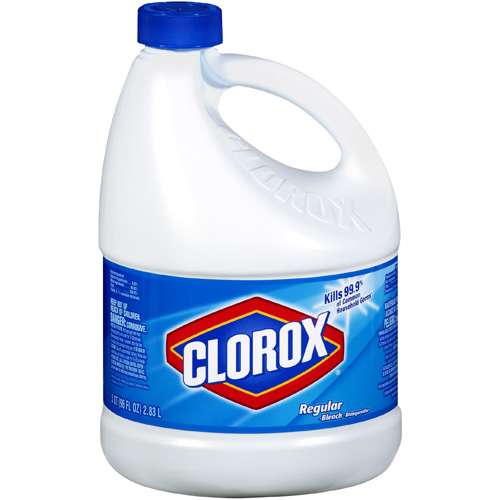
Few commercial cleaning products are completely safe to use, but some seem to be much worse for your lungs than others. Certain harsh cleaning chemicals, like ammonia and bleach, are particularly toxic to breathe.
The 2017 Harvard study, for instance, identified some specific chemical culprits that were most strongly linked to respiratory decline. They found that exposure to cleaning solutions containing bleach and a category of chemicals known as quaternary ammonium compounds (quats) seemed especially likely to cause COPD later in life.
Researchers believe that both types of chemicals can cause significant respiratory problems, even in small amounts, to people who use them regularly. If they are that dangerous even to healthy adults, using these chemicals could have even worse consequences for people with asthma or existing respiratory diseases.
Unfortunately, ammonia and bleach are some of the most common chemicals found in commercial cleaning products. If you don't read the ingredients carefully, you might even use cleaners containing ammonia or bleach without even realizing it.
However, ammonia and bleach are not the only chemicals worth avoiding; most commercial cleaning products contain chemical compounds that can irritate your lungs. A category of chemicals known as volatile organic compounds (VOCs), for instance, are well-known air pollutants and respiratory irritants that are found in all sorts of cleaning solutions.

There are many different types of VOCs, and they are found in a wide array of products, including cleaning solutions, hair spray, and even building materials like plywood and glues. Some VOCs are harmless, while others can hurt your lungs and cause a variety of other health issues, including organ damage and cancer.
In small amounts, VOCs are usually not harmful to healthy adults. However, if you get exposed to too many VOCs over a long period of time, they can cause serious health problems and chronic respiratory symptoms.
VOC's are most likely to cause respiratory symptoms in people with sensitive respiratory tracts, including people with asthma and COPD. Their existing respiratory issues make their lungs more prone to both the short-term and long-term effects of exposure, which is why they should be more careful to avoid VOCs.
If you have asthma or COPD, even mild fragrances in cleaning solutions and air fresheners can irritate your lungs badly enough to cause serious respiratory symptoms. Other VOC-heavy household chemicals, like adhesives, varnishes, and fabric softeners, may also trigger coughing and shortness of breath.
That's why it's important to check the ingredients on any cleaning and chemical products you buy to use in your home. Unless you need them for a very specific purpose, you should always avoid any cleaning solutions that contain ammonia, bleach, VOCs, or other harsh cleaning chemicals.
Sometimes, you can find versions of cleaning products that contain smaller amounts of VOCs and other noxious chemicals. However, it can be difficult to determine whether a product is safe because it's so hard to recognize the names of all the hazardous chemical compounds.
To help you out, we've made a list of some of the most common chemicals in cleaning solutions that can be dangerous to your lungs. We've also included some of their more obscure chemical names so you can more easily pick them out of ingredient lists.
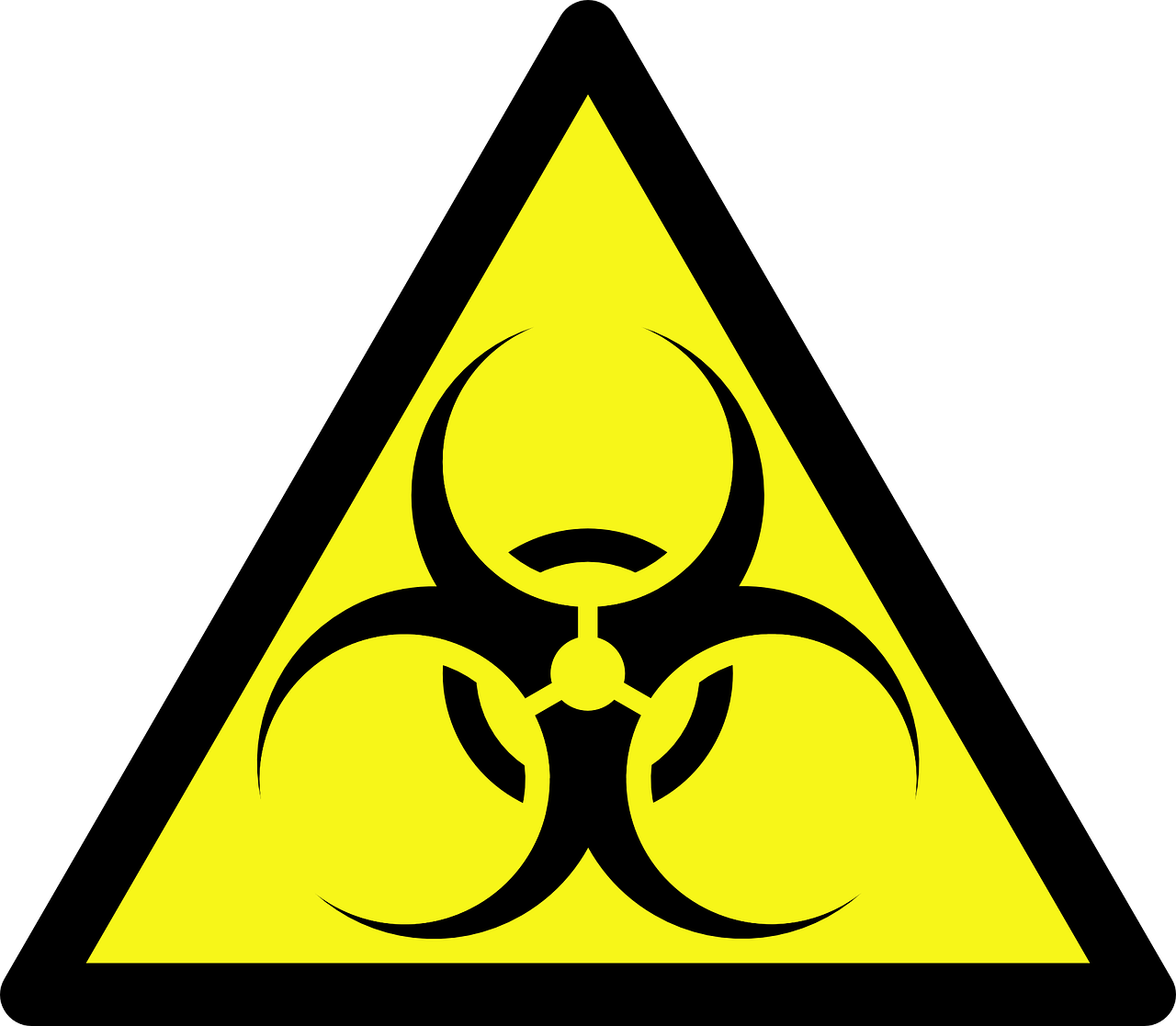
Here are some of the most hazardous chemicals for your lungs and respiratory system:
- Ammonia
- Bleach
- Sodium hypochlorite
- Chemical solvents
- Hydrochloric acid
- Sulfiric acid
- Napthalene
- Propellants
- Formaldehyde (a VOC)
- Hydroxymethylglycinate
- Diazolidinyl urea
- Quaternium-15
- DMDM, aka Glydant
- Bronopol, aka 2-bromo-2-nitropropane-1,3-diol
- Grotan, aka hexahydro-1,3,5-tris(2-hydroxyethyl)-S-triazine
- Quaternary ammonium compounds
- Stearalkonium chloride
- Benzalkonium chloride
- Centrimonium bromide
- Quaternium 1-29
- Didecyl dimethyl ammonium chloride (DDAC)
- “Fragrance” (many products don't list specific chemicals used for fragrance)
- 1,4-dioxane
- Cresol
Here is a list of some specific products that contain hazardous chemicals or emit fumes that can irritate your lungs:
- Drain cleaners
- Disinfectants and sanitizing solutions
- Aerosol sprays (including fragrances and air fresheners)
- Carpet powders
- Dry cleaning powders
- Pain thinners
- Varnishes
- Adhesives
- Paint fumes
- Fabric softeners
If you suffer from chronic respiratory problems, it's worth going well out of your way to protect your lungs from all types of cleaning fumes, not just ammonia and bleach. That's why it's best to avoid commercial cleaning products all-together when possible and make your own lung-healthy cleaning solutions at home.
Which Cleaning Products are Safe?
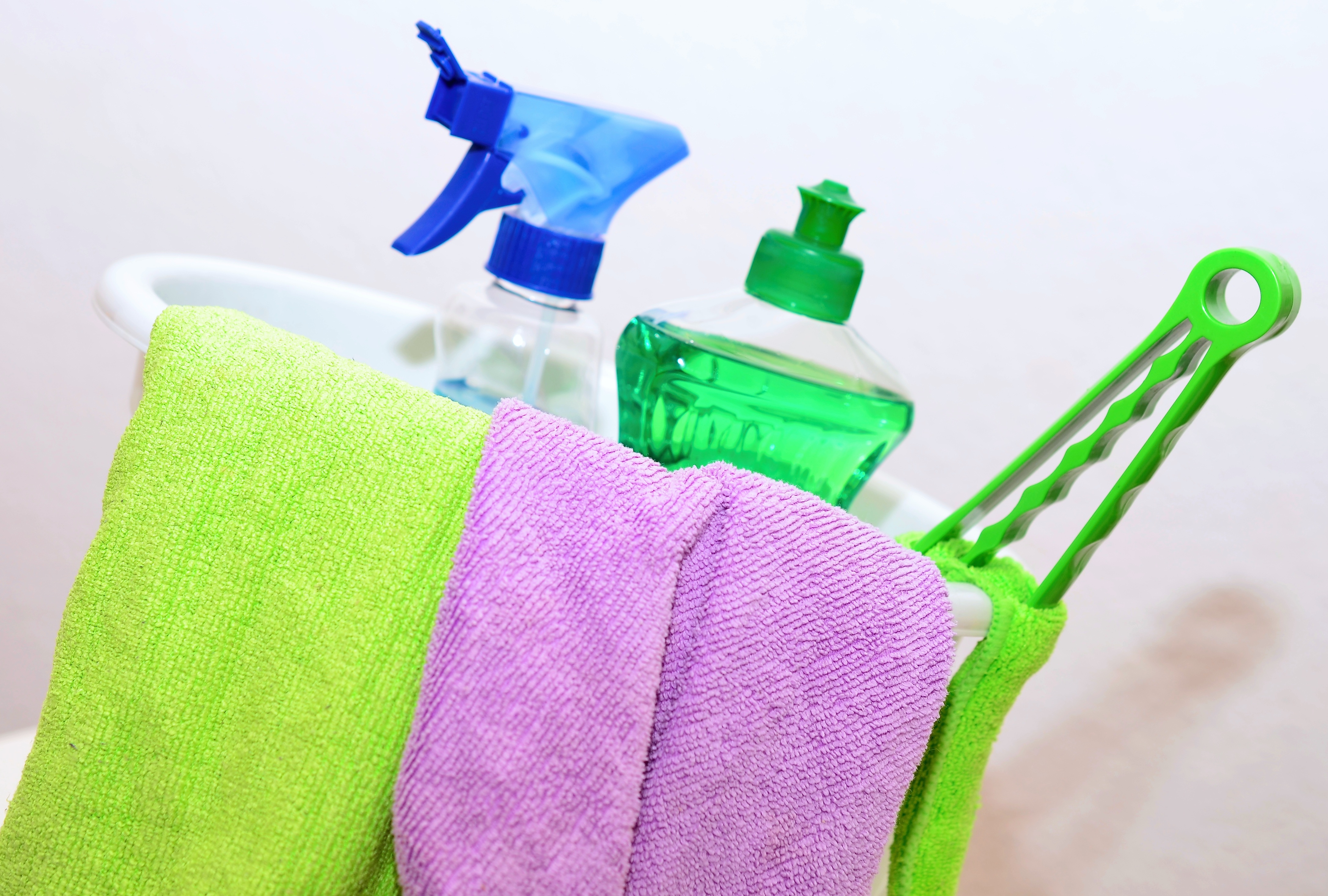
The vast majority of commercial cleaning solutions are likely to contain noxious chemicals, VOCs, and fragrances that are dangerous to breathe. In order to eliminate the risk of harmful fumes, you will likely have to buy specialized, mild cleaning products or make your own DIY cleaning solutions.
Lung-Safe Commercial Cleaning Products
Unfortunately, products labeled “green” or “environmentally-friendly” may not actually be any safer for your lungs. That's why reading the label is a must; you should always look closely at the ingredients list and warning information before using any commercial chemical.
However, there are some other resources that can help you find safer cleaning products to use in your home. Both the Asthma and Allergy Foundation of America and the EPA have endorsed a multitude of products that are better for your health and the environment.
How to Find Safer Cleaning Products:
- The EPA's search tool for “Safer Choice Standard” products (search by product type to find a variety of products for different cleaning purposes)
- The Asthma and Allergy Foundation of America's list of certified asthma- and allergy-friendly products
DIY Lung-Safe Cleaning Products You Can Make Yourself at Home
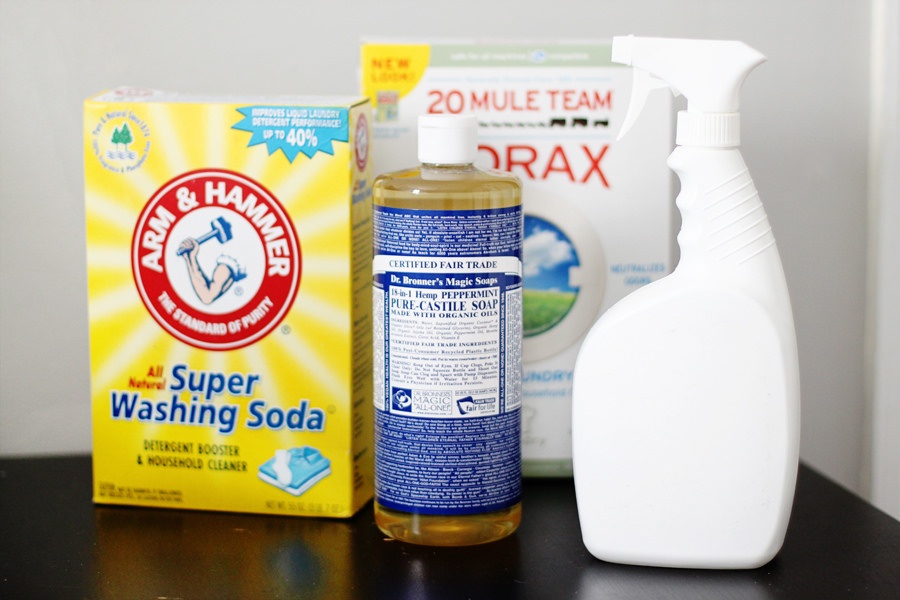 |
| Photo by Abi Porter |
Safe commercial cleaners can be difficult to find and expensive to buy once you do. Luckily, you can make simple and effective cleaning solutions yourself using just a few basic ingredients.
The following DIY recipes for homemade cleaners all use common, mild ingredients like soap, baking soda, vinegar, lemon juice, and borax. If you have asthma or COPD, these solutions won't harm your lungs and shouldn't trigger any respiratory symptoms.
All-purpose Cleaner
Recipe:
- 1 quart warm water
- 4 tablespoons baking soda
Uses: This deodorizing solution is great for cleaning smooth surfaces like appliances, faucets, kitchen counters, door handles, and more.
Instructions: Mix the water and baking soda together in a large container like a bucket, mixing bowl, or a large pot. To use, simply wet a cleaning towel or sponge with the solution and gently wipe down the surface you want to clean. The solution works best while the water is warm, so you should try to use it immediately.
Glass and Window Cleaner

Recipe:
- 2 cups water
- ½ cup white vinegar
Uses: Use to wipe down smooth glass surfaces like windows, glass doors. and glass tabletops.
Instructions: Mix the water and white vinegar together and store the solution in an airtight container or spray bottle. To use, either spray the solution directly on the glass surface and wipe dry, or wipe down the surface with a clean cloth dampened with the solution. You may need to wipe the surface one more time with a dry cloth to remove any moisture and leave the glass streak-free.
Grease-cutting Cleaner
Recipe:
- 1 cup white vinegar
- A few drops of liquid Dawn dish soap
- 1 tablespoon baking soda
- 2-3 cups of water
Uses: This cleaner is great for removing oil and grease from smooth surfaces like your kitchen counters, oven, and sink.
Instructions: Mix the vinegar, dish soap, and baking soda together in a spray bottle or another airtight container. Then add 2-3 cups of water and shake vigorously. Spray the greasy surface directly or dip a sponge in the solution, then wipe the surface clean. You may need to give the surface another wipe with a damp cloth to remove any leftover residue.
Scrubbing Solution
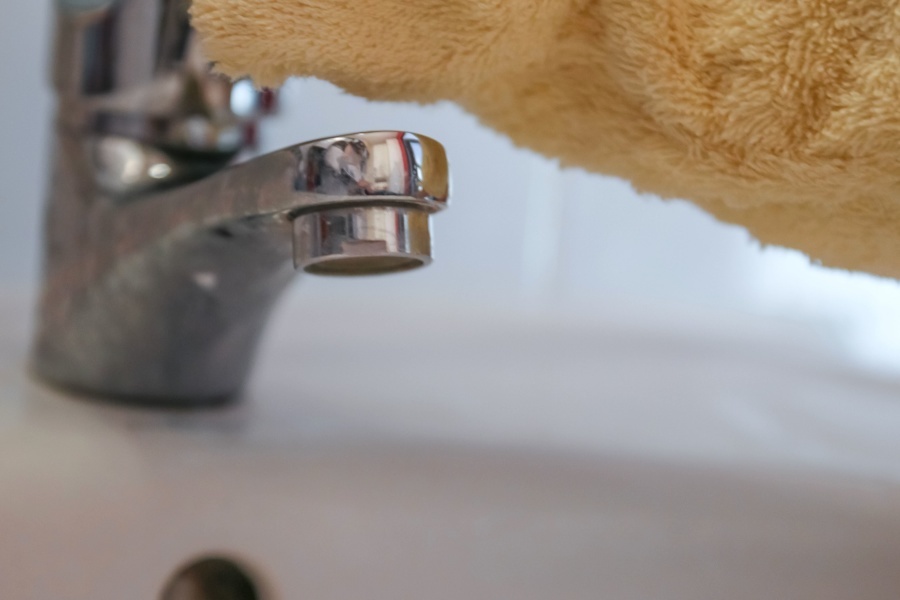
Recipe:
- 2 tablespoons lemon juice
- ½ up borax
Uses: This paste is great for removing rust and stains from porcelain, enamel, or stainless steel surfaces like your bathtub or sink.
Instructions: Mix the lemon juice and borax together to form a gritty paste. Apply the paste to a sponge or scrub brush and scrub the surface you want to clean. Once the stain or rust is removed, wipe the area clean with a damp cloth.
How to Reduce Your Exposure to Cleaning Fumes
{{cta('43b79c5e-6bd6-4f02-ac27-2d038d20c146','justifycenter')}}
There are many things you can do when you use cleaning products to reduce your exposure to their fumes. After all, even cleaning products that are safer for your lungs can irritate your respiratory system if it is very sensitive or you suffer from severe COPD.
That's why it's important to learn how to use all cleaning products safely. That includes properly handling chemicals, using noxious cleaners only when necessary, and ensuring that the air is well-ventilated while you clean.
Don't Use Spray Bottles
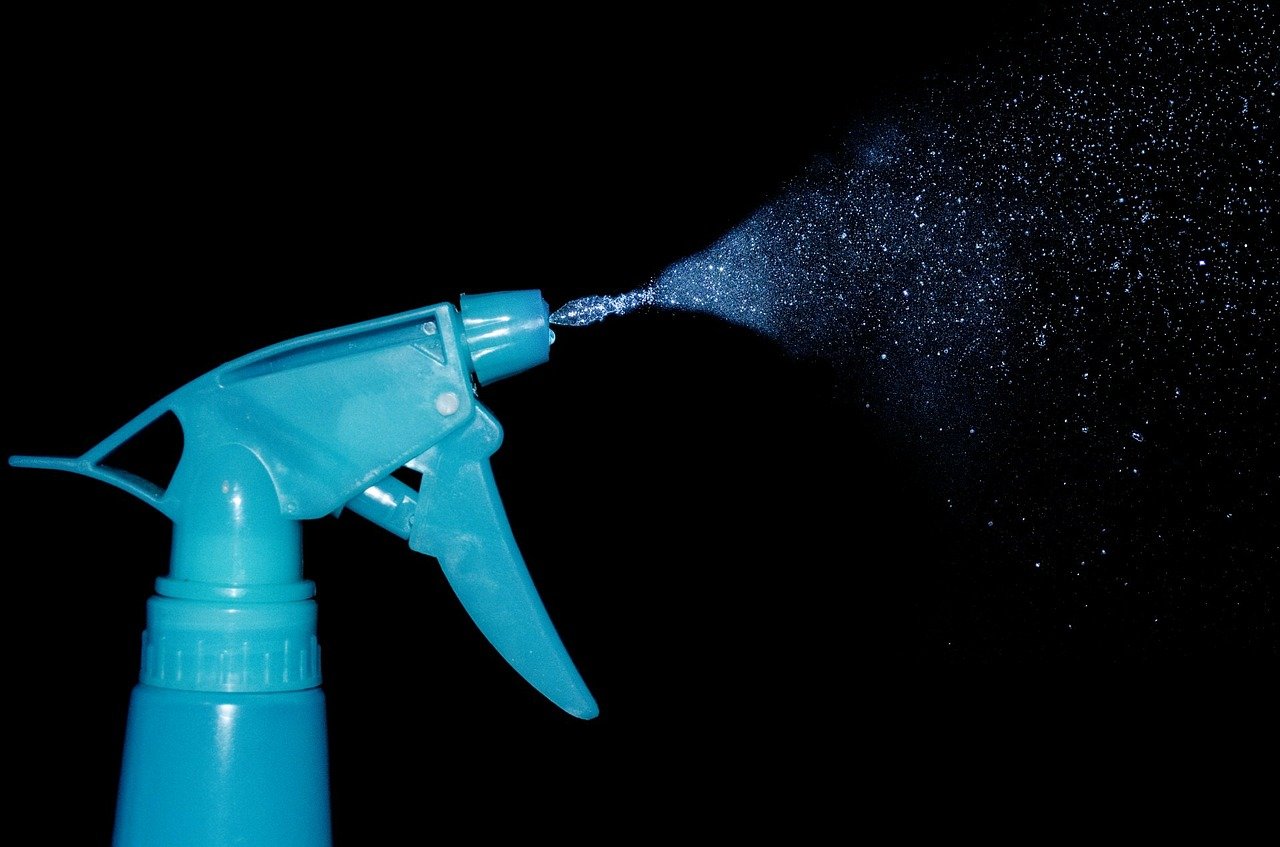
Spray bottles turn cleaning solutions into a fine mist, much of which ends up in the air rather than on the surface you are spraying. These droplets and fumes mix into the air and get into your lungs when you breathe.
Because of this, any time you use a cleaning spray, you are essentially spraying chemical fumes into the room. It is exposes you to significantly more fumes than plain liquid solutions and can be much more damaging to your lungs.
Instead of using spray bottles, you can simply use a cloth or sponge to absorb the solution and coat the surface you want to clean. Just dip your cloth (or sponge) into the solution, wring it out, and use circular wiping motions to distribute it evenly over the area.
Then, use a clean, damp cloth to wipe off the solution and any residue it loosens up. You may need to do a final wipe with a dry cloth to remove any excess moisture left behind.
Minimize How Often You Use Chemical Cleaners
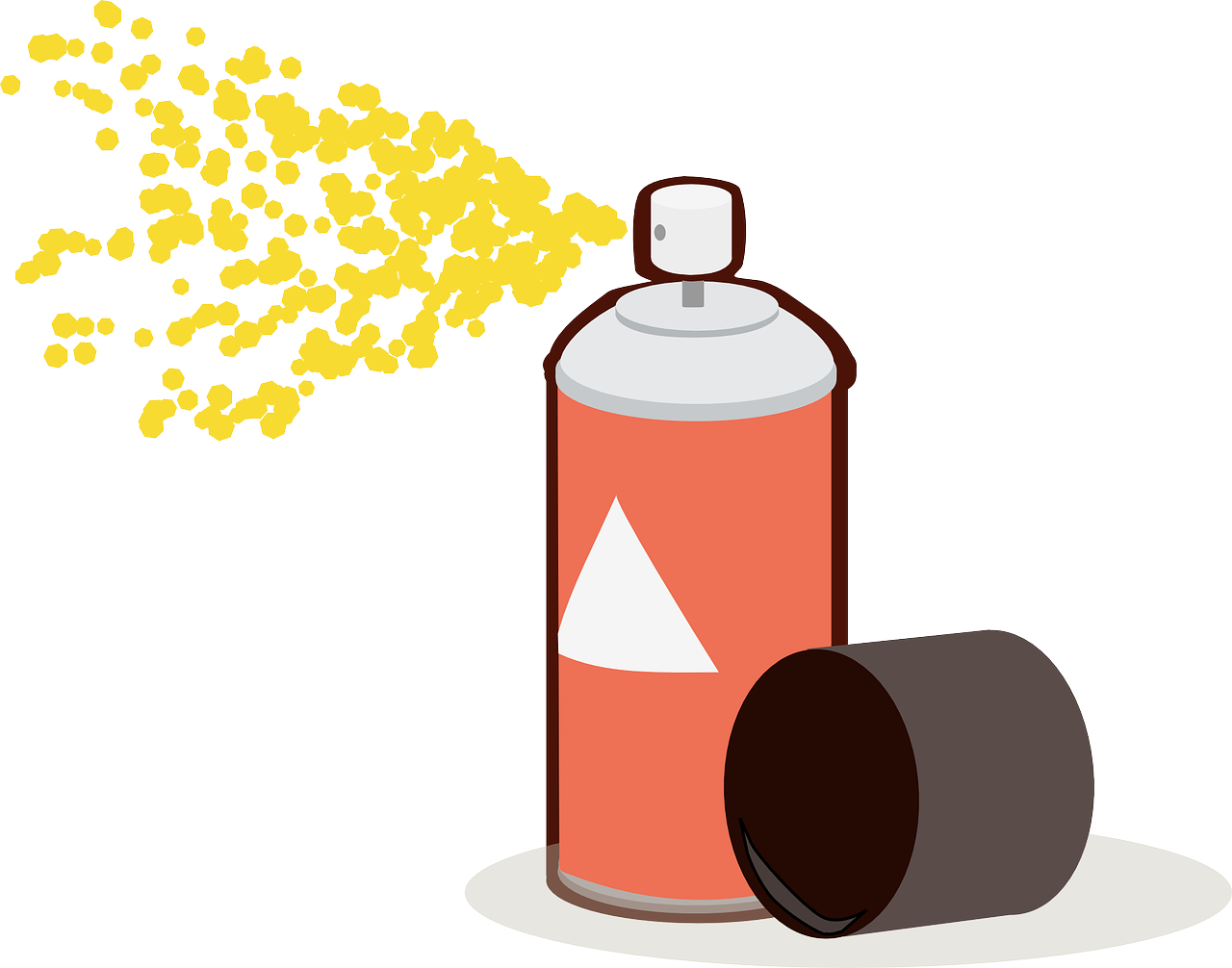
Having COPD means you are more prone to illnesses and respiratory infections, which means it is very important to keep your environment free of bacteria and other sickness-causing pathogens. However, that doesn't mean that you have to use harsh chemicals and disinfectants every time you clean.
Chances are you don't actually need to use chemical cleaners and sanitizing solutions nearly as often as you think. In fact, the vast majority of cleaning tasks can be completed to satisfaction with nothing more than a clean cloth,


